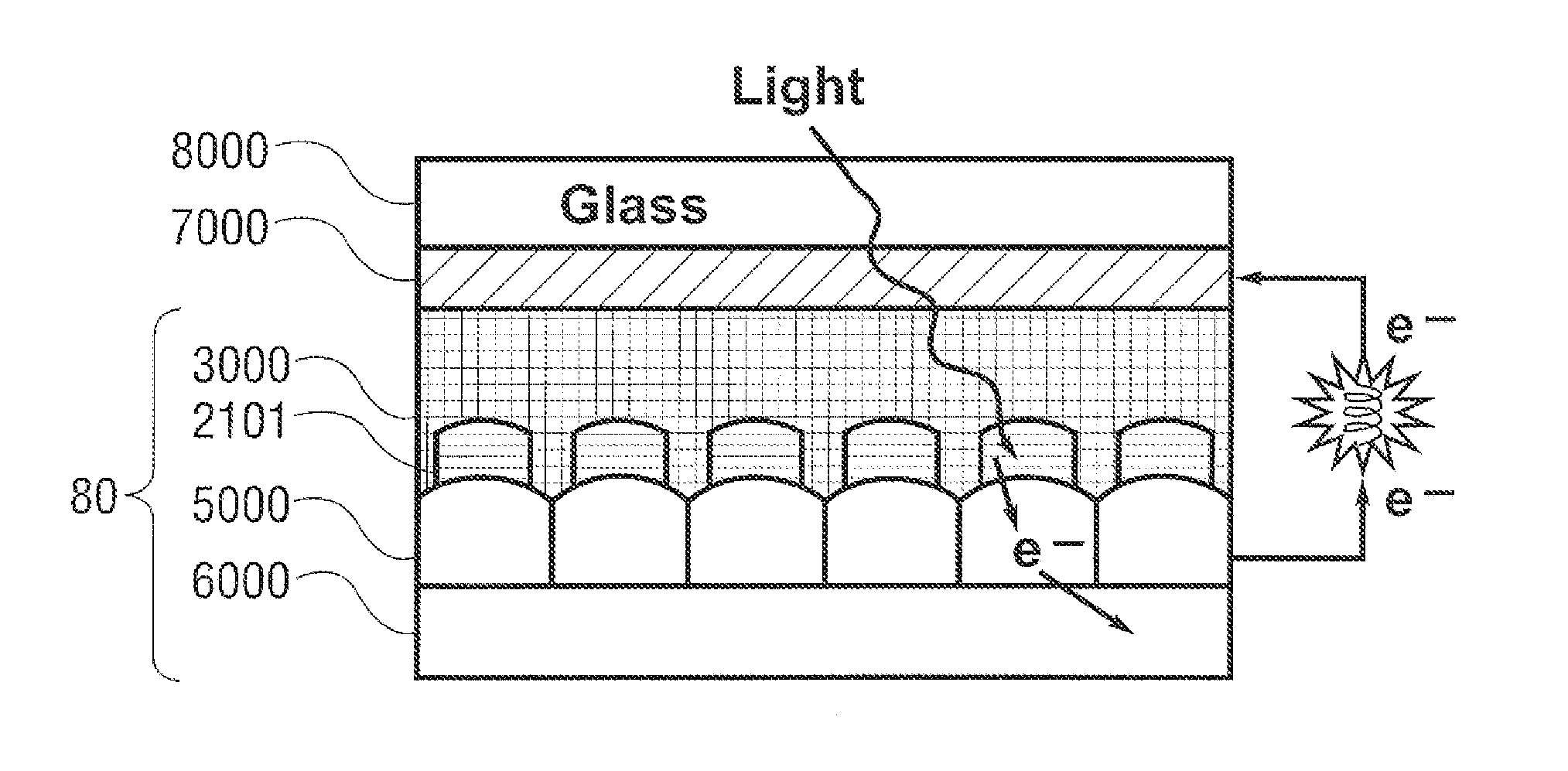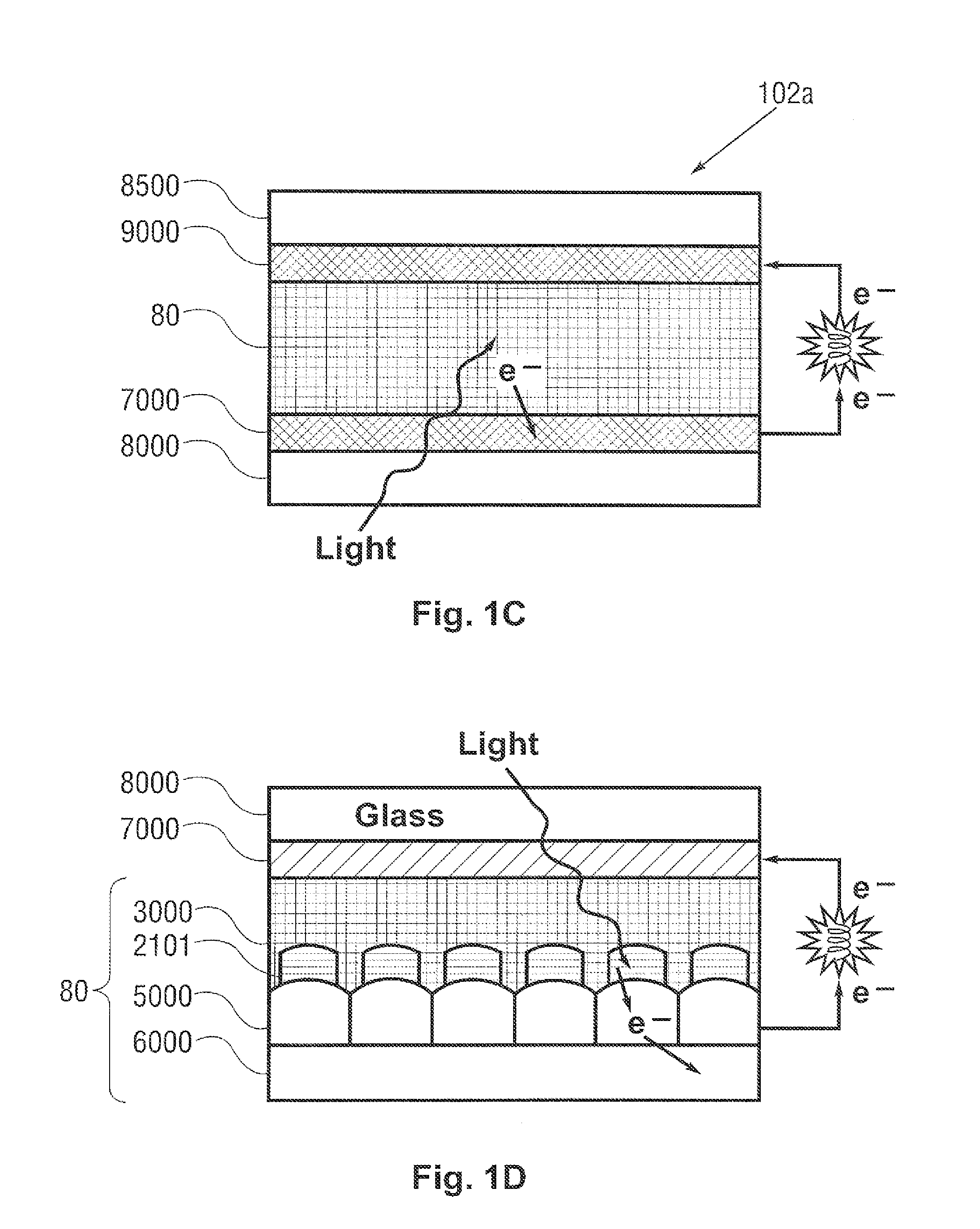Thin-film photovoltaic structures including semiconductor grain and oxide layers
a photovoltaic structure and thin film technology, applied in the field of photovoltaics, can solve the problems of excess kinetic energy, esub>k/sub>(excess) loss, and efficiency to 31%, and achieve the effect of low cos
- Summary
- Abstract
- Description
- Claims
- Application Information
AI Technical Summary
Benefits of technology
Problems solved by technology
Method used
Image
Examples
Embodiment Construction
A. Overview
[0024]FIGS. 1a to 1d illustrate example structures and configurations of solar cells according to several possible implementations of the invention. As FIG. 1a illustrates, a solar cell 100a may comprise, in overlying sequence a transparent layer 8000, a transparent conductive layer 7000, a photoactive conversion layer 80, a second transparent conductive layer 7000 and a second transparent material layer 8000. In a particular implementation, the transparent conductive layer 7000 may be indium oxide doped with tin oxide. In some implementations, the transparent layer 8000 may be glass, plastic or other suitable protective material.
[0025]In other implementations, solar cell 101a, as FIG. 1b shows, may comprise (in overlying sequence) non-transparent substrate 8600, contact layer 9000, photoactive conversion layer 80, transparent conductive layer 7000, and transparent material layer 8000. FIG. 1c shows solar cell 102a comprising (in overlying sequence) transparent substrate ...
PUM
| Property | Measurement | Unit |
|---|---|---|
| band gap energies | aaaaa | aaaaa |
| semiconductor band gap energy | aaaaa | aaaaa |
| sizes | aaaaa | aaaaa |
Abstract
Description
Claims
Application Information
 Login to View More
Login to View More - R&D
- Intellectual Property
- Life Sciences
- Materials
- Tech Scout
- Unparalleled Data Quality
- Higher Quality Content
- 60% Fewer Hallucinations
Browse by: Latest US Patents, China's latest patents, Technical Efficacy Thesaurus, Application Domain, Technology Topic, Popular Technical Reports.
© 2025 PatSnap. All rights reserved.Legal|Privacy policy|Modern Slavery Act Transparency Statement|Sitemap|About US| Contact US: help@patsnap.com



